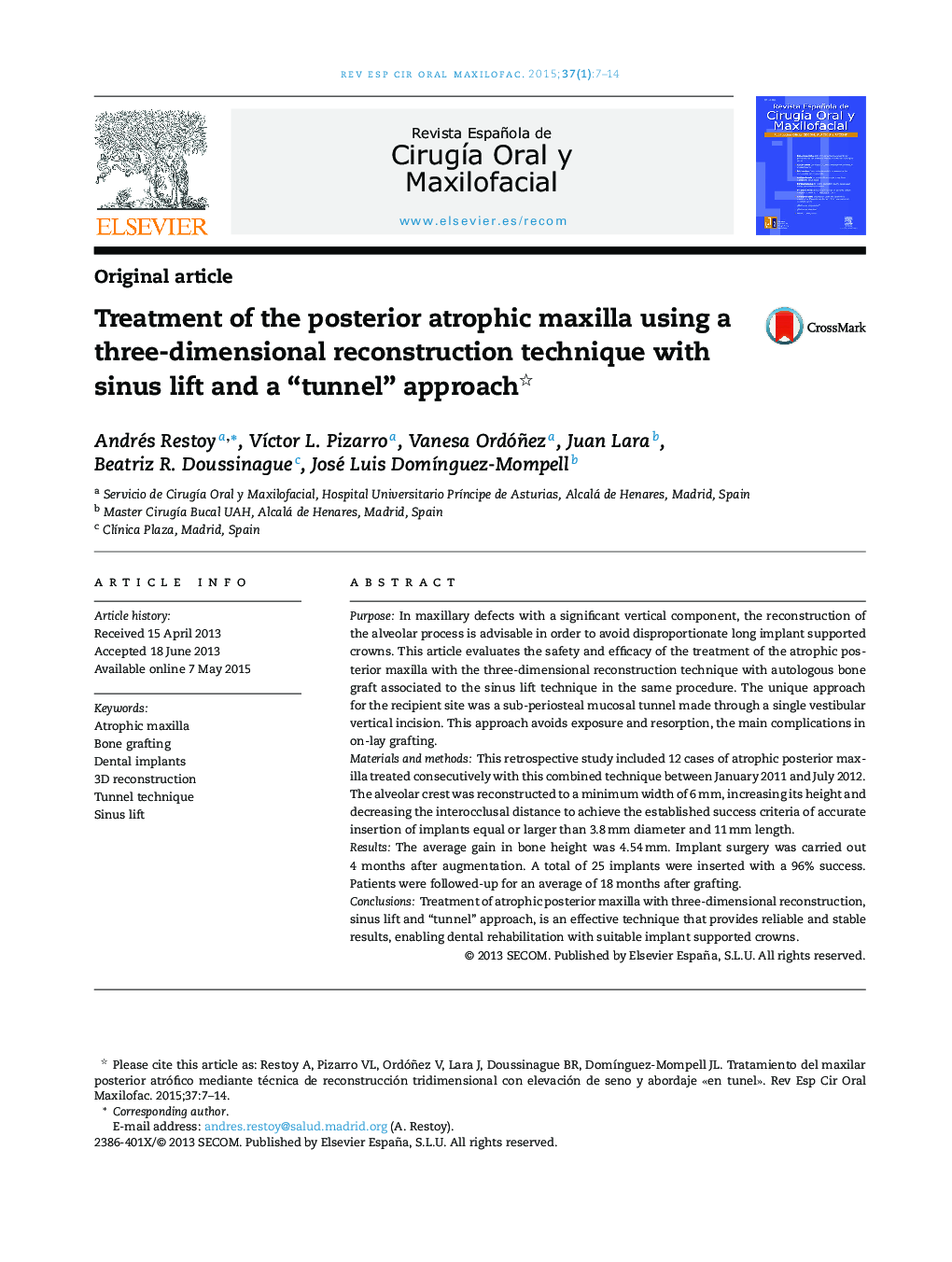| Article ID | Journal | Published Year | Pages | File Type |
|---|---|---|---|---|
| 3172999 | Revista Española de Cirugía Oral y Maxilofacial (English Edition) | 2015 | 8 Pages |
PurposeIn maxillary defects with a significant vertical component, the reconstruction of the alveolar process is advisable in order to avoid disproportionate long implant supported crowns. This article evaluates the safety and efficacy of the treatment of the atrophic posterior maxilla with the three-dimensional reconstruction technique with autologous bone graft associated to the sinus lift technique in the same procedure. The unique approach for the recipient site was a sub-periosteal mucosal tunnel made through a single vestibular vertical incision. This approach avoids exposure and resorption, the main complications in on-lay grafting.Materials and methodsThis retrospective study included 12 cases of atrophic posterior maxilla treated consecutively with this combined technique between January 2011 and July 2012. The alveolar crest was reconstructed to a minimum width of 6 mm, increasing its height and decreasing the interocclusal distance to achieve the established success criteria of accurate insertion of implants equal or larger than 3.8 mm diameter and 11 mm length.ResultsThe average gain in bone height was 4.54 mm. Implant surgery was carried out 4 months after augmentation. A total of 25 implants were inserted with a 96% success. Patients were followed-up for an average of 18 months after grafting.ConclusionsTreatment of atrophic posterior maxilla with three-dimensional reconstruction, sinus lift and “tunnel” approach, is an effective technique that provides reliable and stable results, enabling dental rehabilitation with suitable implant supported crowns.
ResumenObjetivosEn defectos maxilares con importante componente vertical, es necesaria la reconstrucción del proceso alveolar previamente a la rehabilitación con implantes para evitar una longitud desproporcionada de las coronas protésicas. En este artículo se revisa el tratamiento del maxilar posterior atrófico mediante elevación de seno y técnica de reconstrucción alveolar tridimensional simultánea con autoinjerto óseo. Se utilizó como vía de abordaje un túnel mucoso subperióstico a través de una incisión vertical única para prevenir los principales problemas de los injertos en aposición: la exposición y la reabsorción.Material y métodoSe han evaluado retrospectivamente 12 atrofias maxilares posteriores tratadas con esta técnica de forma consecutiva entre enero de 2011 y julio de 2012. El reborde alveolar se reconstruyó hasta un mínimo de 6 mm de anchura a nivel crestal, incrementando su altura y disminuyendo la distancia interoclusal, para alcanzar el criterio de éxito establecido de fijación segura de implantes de, al menos, 3,8 y 11 mm de diámetro y longitud respectivamente.ResultadosLa ganancia media ósea en altura fue de 4,54 mm. La cirugía de implantes se realizó hacia los 4 meses. Se colocaron 25 implantes con un 96% de éxito. El tiempo medio de seguimiento fue de 18 meses.ConclusionesEl tratamiento del sector posterior maxilar atrófico mediante reconstrucción tridimensional con autoinjerto óseo, elevación sinusal y abordaje por tunelización es una técnica que proporciona resultados predecibles y estables, permitiendo la rehabilitación con coronas sobre implantes dentales de dimensiones adecuadas.
